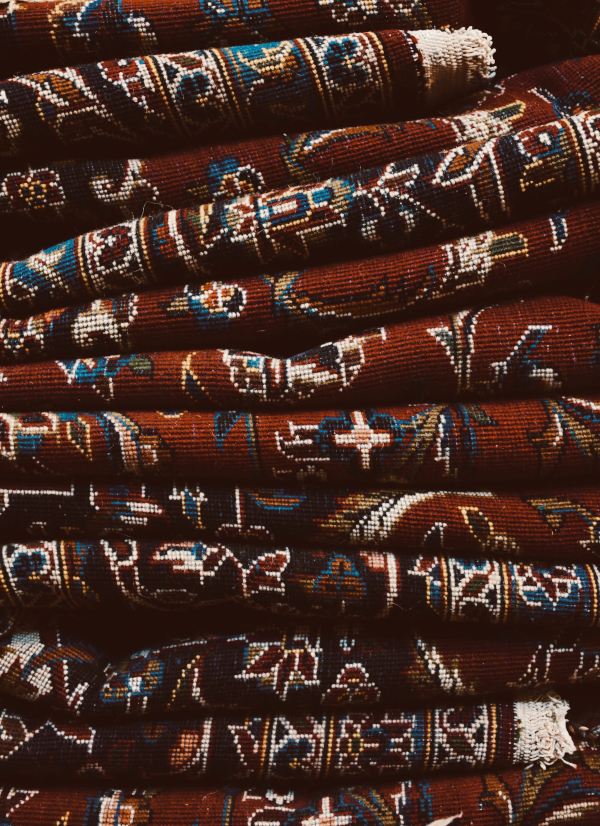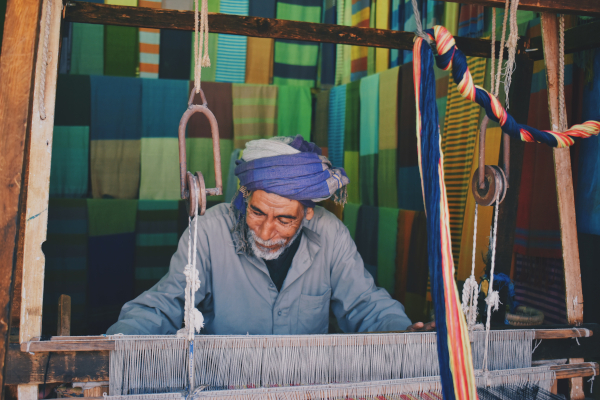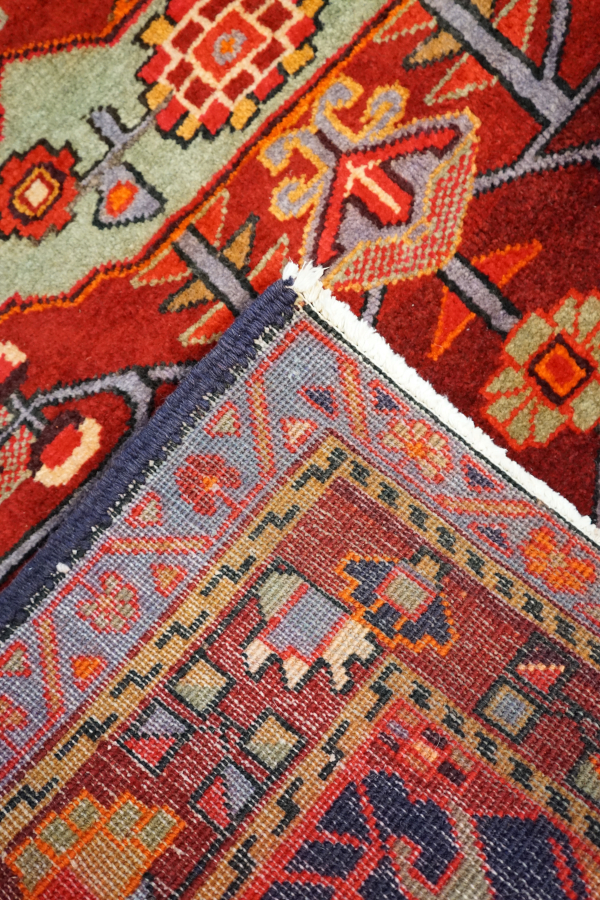Oriental rugs a guide to the right choice for your project
Design — Jun 19.2022
With their elegance and sophistication, Oriental rugs are the stars of the most exclusive furnishings. Each Oriental artifact is a unique piece, made by skilled artisans and expert master knotters. In addition to having considerable decorative power, these creations allow you to have a bit of interior design history in your home.
Analyzing them in detail, the patterns, colors and materials used to create Oriental rugs tell a great deal about both the historical period in which they were conceived and the area in which they were made. These elements also help determine their artistic and economic value.
How do you recognize an authentic Oriental rug?
The definition of an Oriental carpet might seem vague. In theory, any carpet produced from the Middle East to Asia could be defined as an Oriental carpet. In fact, when people talk about Oriental rugs, they often refer to Persian artifacts. The latter, in numbers and in importance, constitute a large portion of the production of ancient and traditional patterns.
In addition to Persian carpets, those produced in other countries where the art of carpet weaving has spread are also part of the group of Oriental carpets. We refer, for example, to China, Turkey and Turkmenistan. All of these carpets have in common that they are made entirely by hand, through the knotting technique, and that they use materials of the highest quality.
Over time, mainly two knotting systems have developed. In the Persian area, an asymmetrical type of knot was used. In the Turkish area, on the other hand, a symmetrical knot was widely used. Knowing how to recognize the knot used thus gives an important clue to the origin of the artifact.
The origin of the carpet can also be deduced by observing its appearance and analyzing the decorative elements used. Recurring motifs in carpets of the Persian tradition, for example, include flowers, animals, plants and other depictions of elements taken from everyday life. In carpets of the Chinese tradition, on the other hand, the use of Buddhist symbols or the use of elements peculiar to Chinese mythology, such as the dragon or phoenix, is common.
In addition to the symbols used in the design of the rug, the various Oriental patterns also differ in the arrangement of decorative elements. There are patterns with or without bangs, with a central medallion and an outer border, or artifacts with a pattern that is repeated over the entire surface of the rug. Then there are patterns with a pattern composition that is even more abstract.

How to assess the value of an oriental rug?
The value of oriental rugs is influenced by several factors. Among the most important are, of course, the materials used and the size of the rug. However, the date and area of weaving also have a bearing.
The most valuable artifacts are those that are ancient and produced with a fine and durable wool yarn, thanks to which richly detailed designs were possible. Other things being equal, the value of an Oriental rug is roughly proportional to its size and the number of knots per square meter. In fact, both elements affect the processing time and the difficulties involved in making the design. Consequently, the selling price of artifacts is proportional to the size and number of knots.
In particular, being able to date the carpet is most important in calculating its value. Older Oriental carpets have a particularly high value and are truly exclusive products, while the price drops for designs produced in the 20th century.
Another parameter that determines the value of a carpet from the Orient is its area of production. Some cities, such as Bukhara, Tabriz, and Shiraz, have become such important centers that they give their names to carpets produced in the area. Not only that, artifacts from those areas are well recognizable by their colors and designs. The high quality of workmanship of these carpets has always been synonymous with refinement and long product life.

How to choose oriental rugs to decorate your home?
An authentic oriental rug can embellish any space in the home. If it is placed in a bare room, such as a hallway or a room furnished with furniture with simple lines, the rug will become the absolute star of the place, enriching it with its own decorative patterns and colors.
Persian or Chinese carpets are the most natural choice for decorating an oriental-inspired home, but they can also prove to be an excellent solution for Western homes that are furnished with contemporary furniture.
If the design allows, oriental rugs can coexist with contemporary art rugs. In this way, each room in the house will have its own distinct identity. The balance given by the meeting of past and present-or that given by the meeting of tradition and modernity-will also ensure an extraordinary result, both in terms of comfort and aesthetics.
Nodus creates prestigious rugs.
Bring luxury into your home!
>>> CONTACT US! <<<
![]() Nodus has reinvented the luxury rug. It was in fact the first brand to propose the concept of the rug as a work of contemporary art.
Nodus has reinvented the luxury rug. It was in fact the first brand to propose the concept of the rug as a work of contemporary art.
Nodus has always created exclusive products that furnish the most beautiful homes in the world. Do you want to make your home inimitable as a work of art?
Bring a hand knotted rug of the highest quality and design into the spaces of your daily life! Give your family and the people you love the beauty of a dream masterpiece! Every piece of Nodus is designed by famous Designers, making it recognisable and prestigious. In this way, each rug is unique: you will not find another one like it. Like all beautiful and unrepeatable things, one piece in the Nodus collection sets you apart and speaks to others about your taste and elegance. CONTACT US!